Northern Pike and Muskellunge are two of North America’s favorite freshwater game fish. These large, predatory species are every bit as fast and mean as their sleek torpedo-shaped bodies imply. Known as “water wolves” and “the fish of a thousand casts” respectively, Pike and Muskie are two fish that absolutely do not come quietly.

In this article, you can delve into the world of “Muskie vs. Pike.” Learn how to tell the two fish apart and where you should go to find them. Pick up some tips on how they behave and what to use to catch a trophy. Whether you’re a die-hard Muskie fan, a proud Pike lover, or a complete beginner, you can always learn more about these majestic creatures.
The Basics
It’s always best to start at the beginning. Before we delve into the details of both fish, here are some common questions people have about Pike and Muskie.
Are Pike and Muskie the Same?
Northern Pike and Muskellunge are close relatives. They’re both from the genus “Esox” along with other Pikes and Pickerels. However, they’re not the same or varieties of the same fish. They’re two different species with different behaviors, markings, and distributions.
Is it Musky or Muskie?
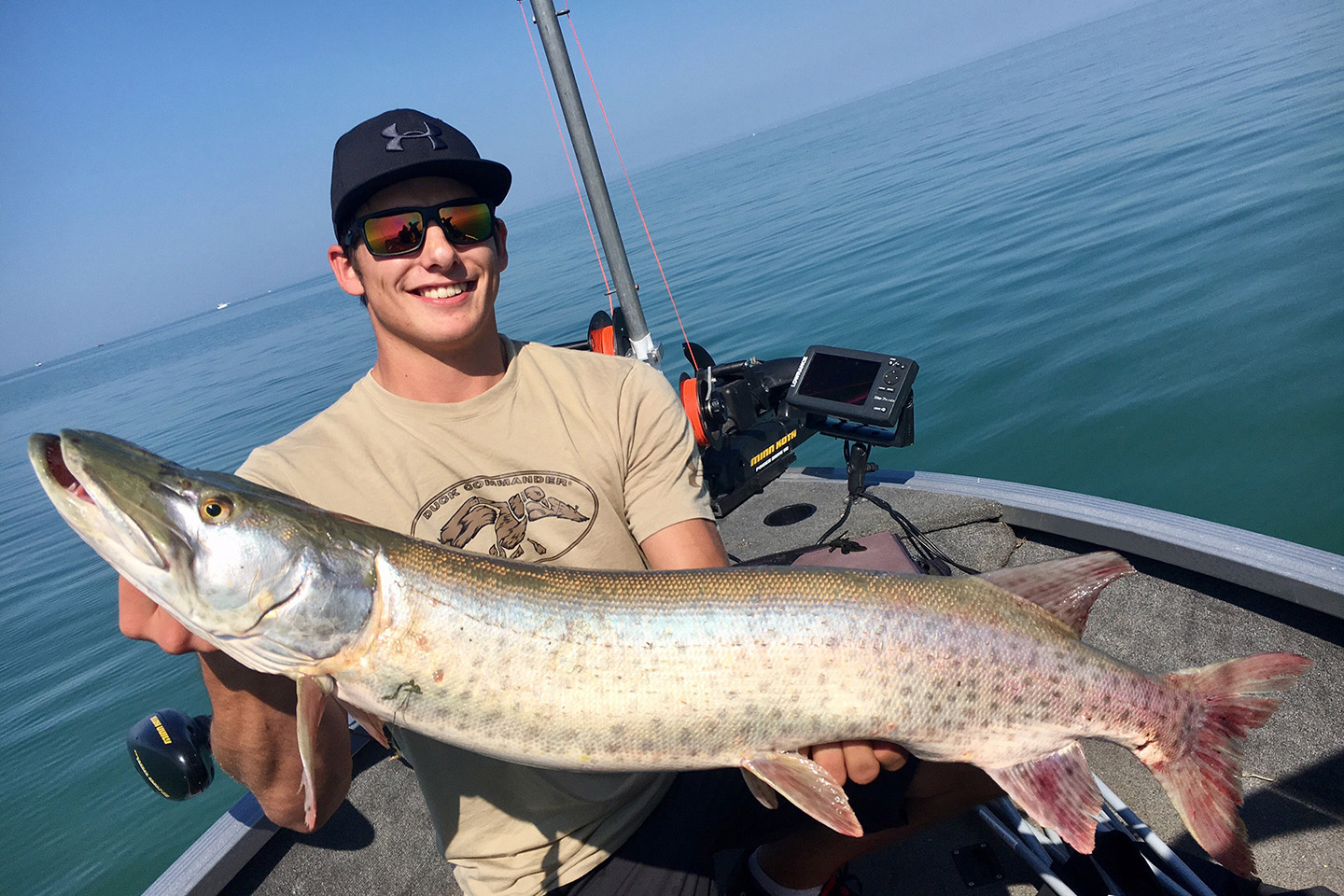
Muskellunge have one of the most varied spellings of any species. Depending on where you catch them, they may be called Muskellunge, Muskelunge, Muscallonge, Maskinonge, or Milliganong. “Muskie” and “Musky” are both accepted spellings and most people use them interchangeably.
What’s Bigger, Pike or Muskie?
Muskie and Pike are often around the same size. This is part of the reason that people have trouble telling them apart. However, Muskie do grow to be much bigger than Pike. The average Pike is less than two feet, while Muskie regularly hit twice that size. The IGFA record for Pike stands at just over 55 pounds, 12 pounds short of the record for Muskie.
Tiger Muskie vs. Muskie
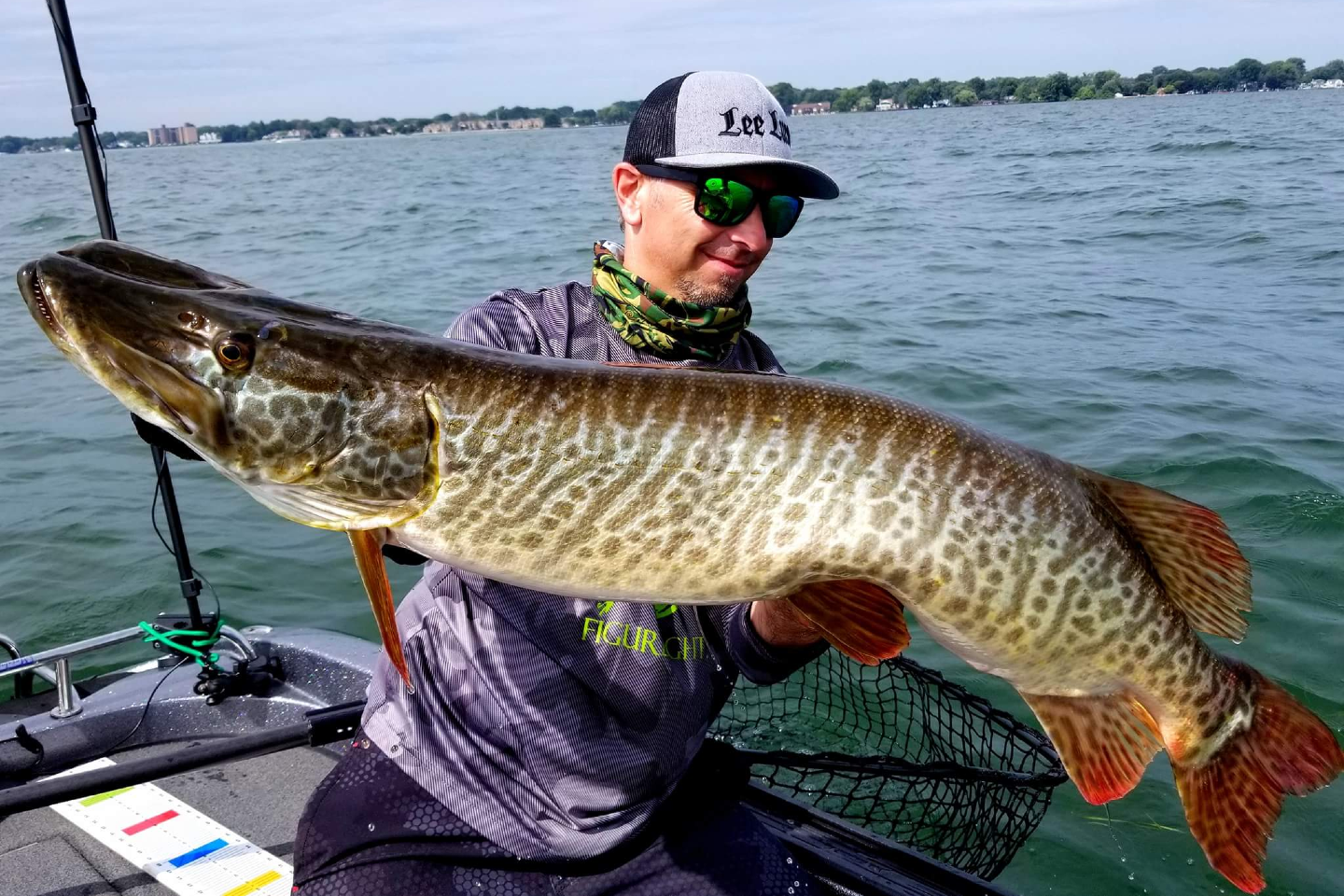
Are Tiger Muskie a subspecies of Muskie? Are they a regional variety? Actually, neither. Tiger Muskie are a hybrid of a female Muskellunge and a male Northern Pike. They’re very rare in the wild, but they are stocked in some waters. Their outlandish looks, large size, and rarity put them high on many anglers’ bucket lists.
Muskie vs. Pike Identification
Muskie and Pike are both long, pointy, freshwater fish. So how do you know which one you’ve caught? Color and size aren’t always reliable, as Muskie vary a lot in both. However, there are three easy ways to identify the fish on the end of your line.
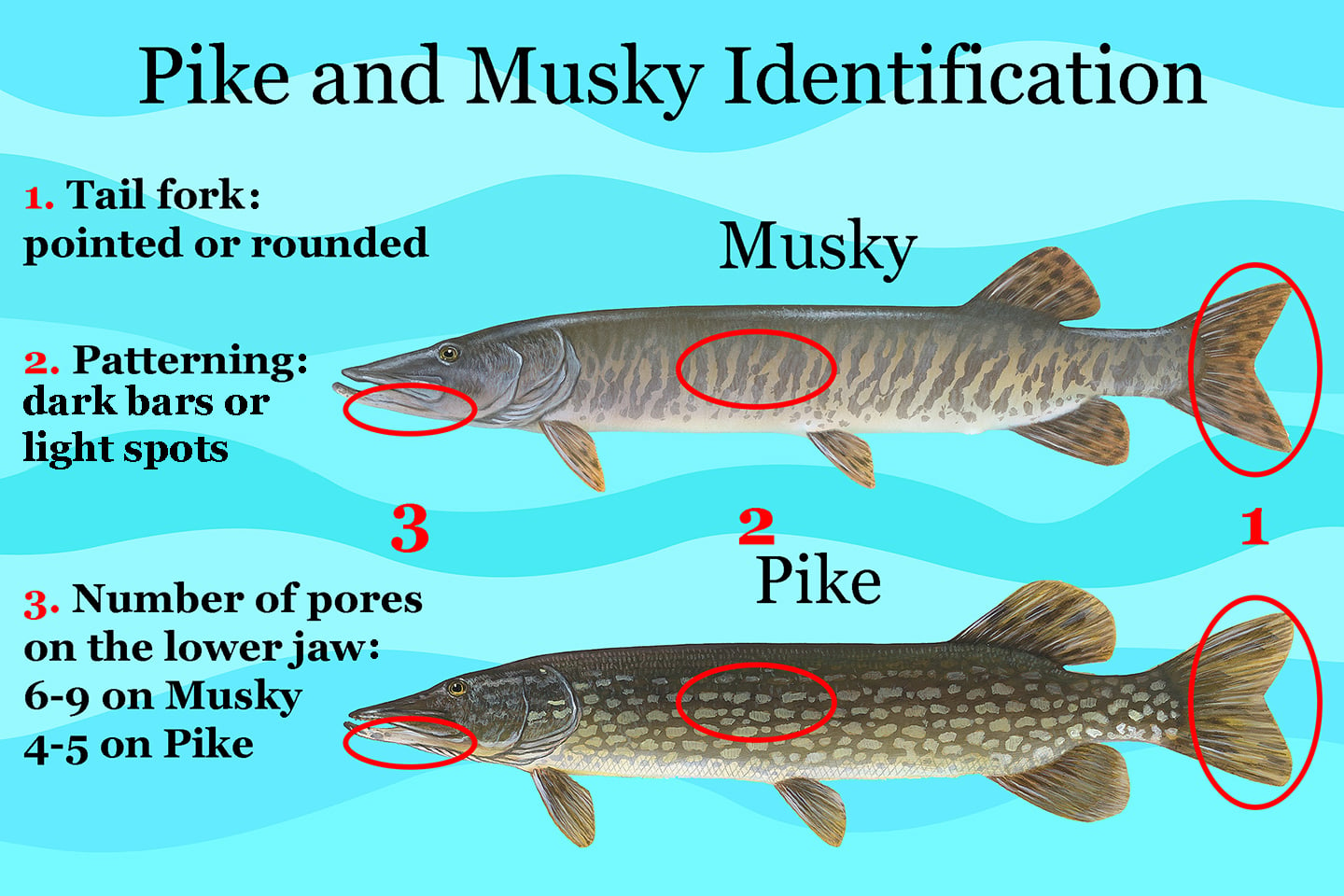
1. Check the tail. The easiest way to distinguish Muskie and Pike is by looking at the tail. Both species have forked tails, but Muskie have much more pointed forks, while Pike tails are more rounded. Tiger Musky also have rounded tails, helping you tell them apart from regular Musky.
2. Look at their markings. Muskie can vary a lot in color and pattern. They may have strong, thick bars, faint spots, or no pattern at all. However, their markings will always be darker than the rest of their body. Pike are the opposite. Their bodies are dark green-blue with lighter, creamy, bean-shaped spots.
3. Count the pores. If all else fails, there’s one surefire way to know what fish you’re holding: Turn it over and look at the underside of the jaw. Pike and Muskie have special pores to detect movement in the water. Pike have 4–5 pores on each side, Muskie have 6–9. Make sure to handle the fish gently and keep your hands well away from its mouth as you flip it over!
Still can’t tell whether you’ve caught a Muskie or a Pike? Take a look at the scales on their face. Pike have scales all over their cheeks, while Muskie only have them on the upper half. You should be able to identify your fish without feeling its face, though.
Where to Find Pike and Muskie
So you know how to identify Muskie vs. Pike, but where should you go to catch them? That really depends on the species. Here are the basics on where to find Pike and Muskie.
Pike and Muskie Distribution
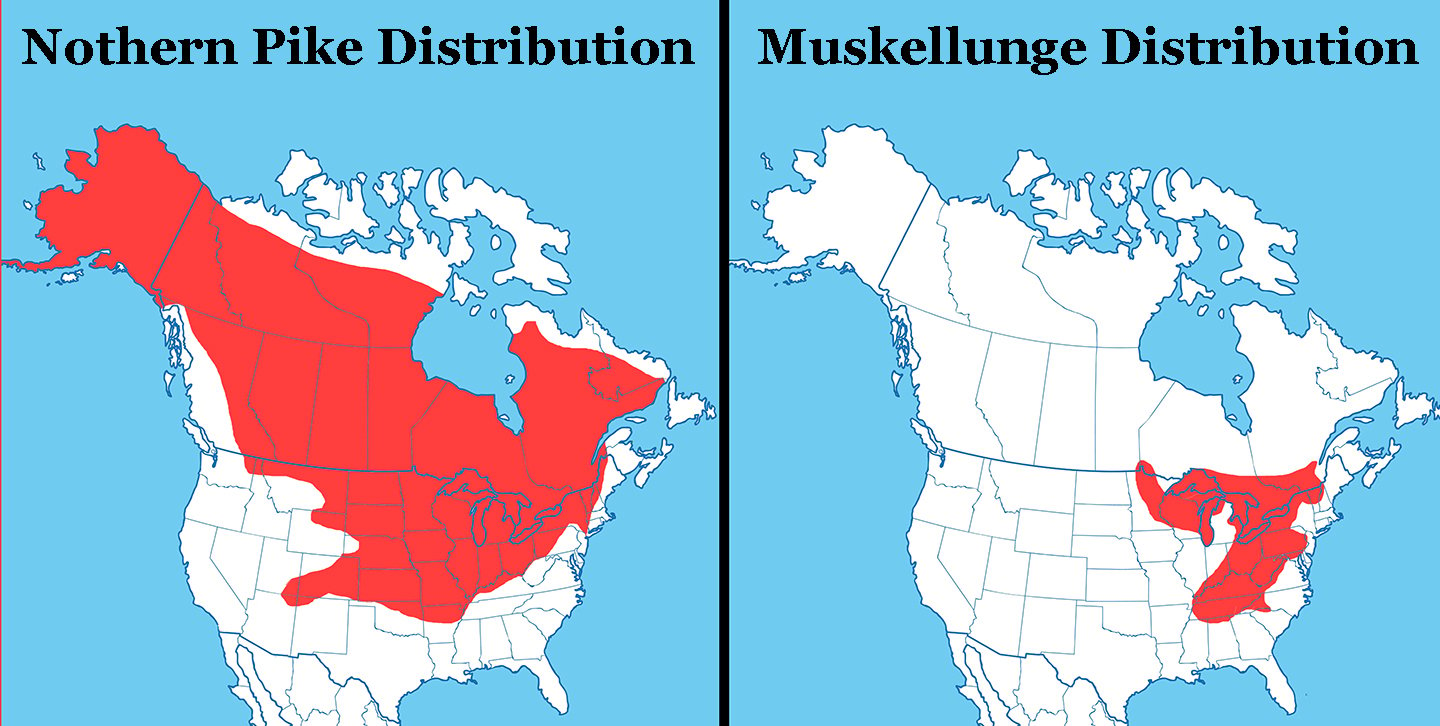
Pike and Muskie both thrive in and around the Great Lakes. You can find both fish in all five lakes and the surrounding rivers. However, that’s about as far as the similarities go.
You can catch Pike in most of North America, From the northwest of Alaska all the way over to Labrador in eastern Canada. They also show up as far south as Oklahoma and Arkansas, and in isolated lakes even farther south than that. Beyond North America, you can find them within the same northerly range all the way around the world.
Muskie have a much more limited distribution. They live in and around the Great Lakes, and down along the Appalachian Mountains as far south as Georgia. They were also introduced into Lake Manitoba and Lake Winnipeg, but catches in these lakes are very rare. If you want the best chance of landing a Muskie, stick to the Great Lakes and the rivers around them.
Pike and Muskie Habitat

Northern Pike and Muskellunge may have very different distributions, but they have similar tastes in habitat. They’re both ambush hunters that hide among thick vegetation, waiting for a meal to swim their way. Both fish prefer clear water, probably because they’re sight-based hunters.
Muskie normally live in large rivers and medium-size or large lakes. Pike are less fussy about where they live. They can show up in smaller rivers and ponds, as well as all the places Muskie tend to inhabit. The best place to look for either fish is in thick weedy sections of rivers or lakes.
Pike and Muskie will generally stick to shallow, sluggish water and rarely go below 40 feet deep. That is, unless the shallows get too warm or there’s more food farther down. Even though they prefer the shallows, Musky also like to keep their options open, so shallow vegetation with easy access to deeper water is always a good place to try.
How to Catch Pike and Muskie
These are both highly predatory fish, built for speed and strength. Because of this, they’re prized game fish throughout their range. Muskie are also famously hard to hook, hence the nickname “fish of a thousand casts.” They’re difficult to trick and impossible to predict. Even so, there are a few go-to tactics for both species.
Pike Fishing Tips
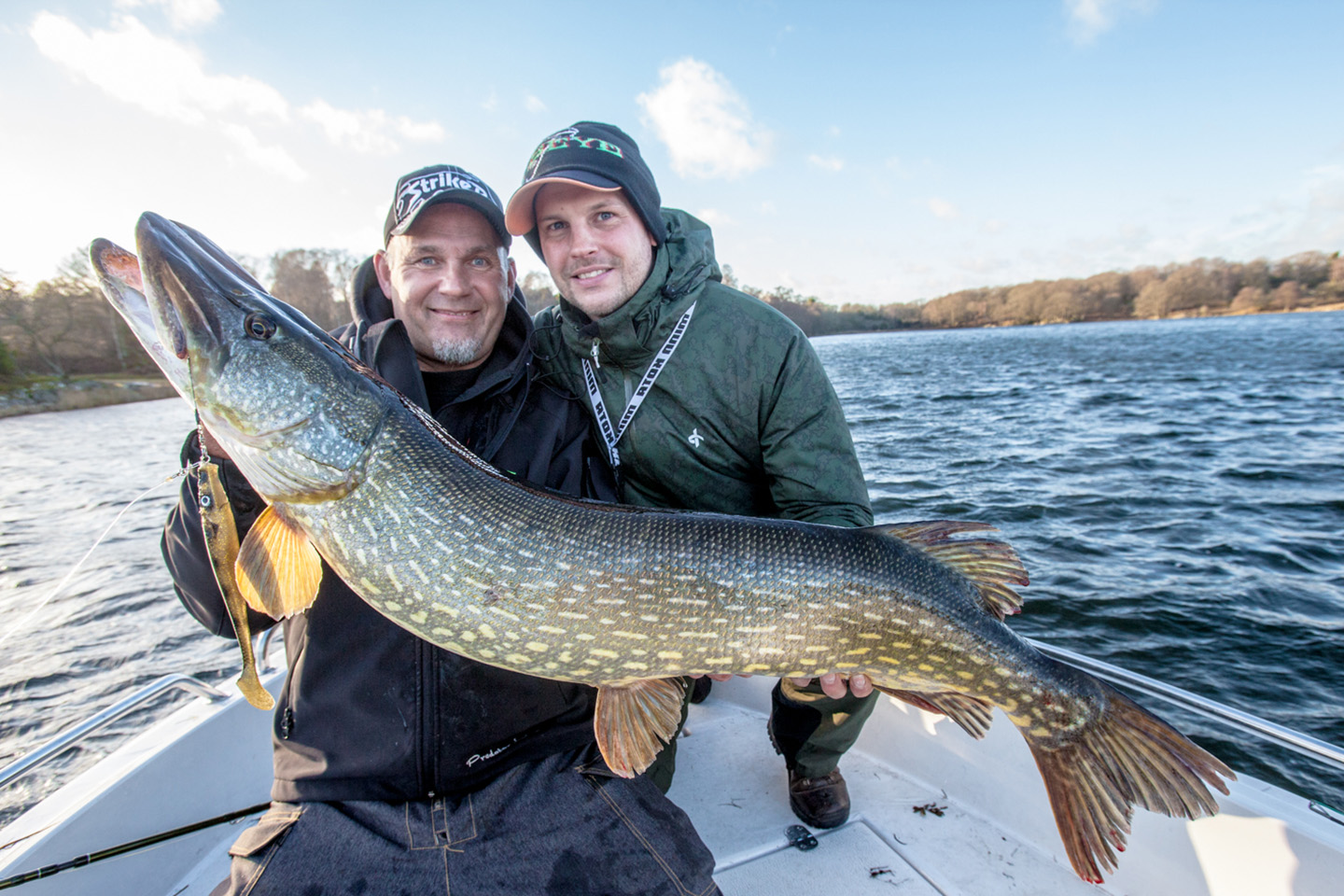
Most anglers use large spoons, shallow-running plugs, or spinnerbaits to catch Pike. Live bait also works, as long as it’s the right size to attract their attention. Pike will go for much larger prey in autumn when they’re stocking up for the winter. In spring, the waters are cold and the fish are slow, so they’re happy with much smaller baits.
Pike are a classic fly fishing target. They’ll take a variety of large streamers and sliders. Just make sure you’re using weedless flies if you don’t want to take half the lake away with you. However you’re fishing, Pike have a mean bite, so make sure to use a heavy leader.
Muskie Fishing Tips
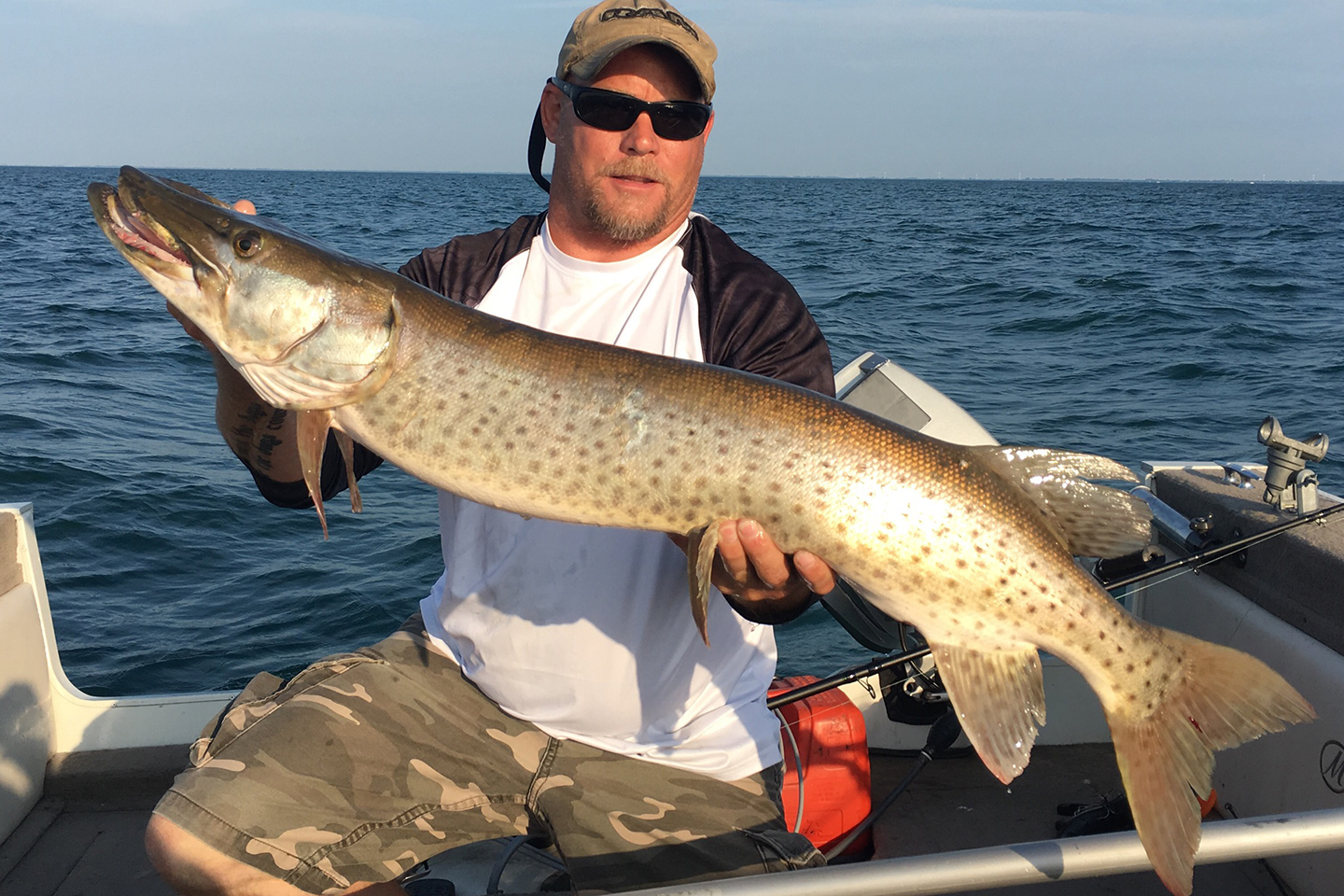
The best tip you can have for Muskie fishing is “be patient.” Even experienced anglers won’t claim to reliably catch big Musky. Aim for a “follow” (the sight of a fish chasing your lure) and you might be rewarded with a hookup. Even then, these guys are famous for their acrobatic displays and their skill at throwing the hook.
You can follow most of the tips for Pike fishing when going after Musky: Fish the weeds. Use larger baits later in the year. Use a wire leader if you want to keep your lure. The best lures for catching Musky are large jigs, jerkbaits, diving plugs, and bucktail spinners. Bucktails and jerkbaits are best for casting, while diving plugs are a common lure for trolling.
Muskie Vs. Pike: Conclusions

Pike and Muskie are both amazing fish to catch. They fight hard, grow huge, and look awesome. Musky are much more limited in their range, although both fish like the same kind of habitat and hunt in a similar way.
Musky are a more prestigious catch because they’re so unpredictable, but Pike definitely deserve legendary status, too. Both these fish are apex predators who use every bit of their strength and agility in the fight. It’s harder to get Musky to bite, but you should always be happy to see either fish on the end of your line.
All credit for this awesome article goes to Fishing Booker. https://fishingbooker.com/blog/muskie-vs-pike-all-you-need-to-know/





